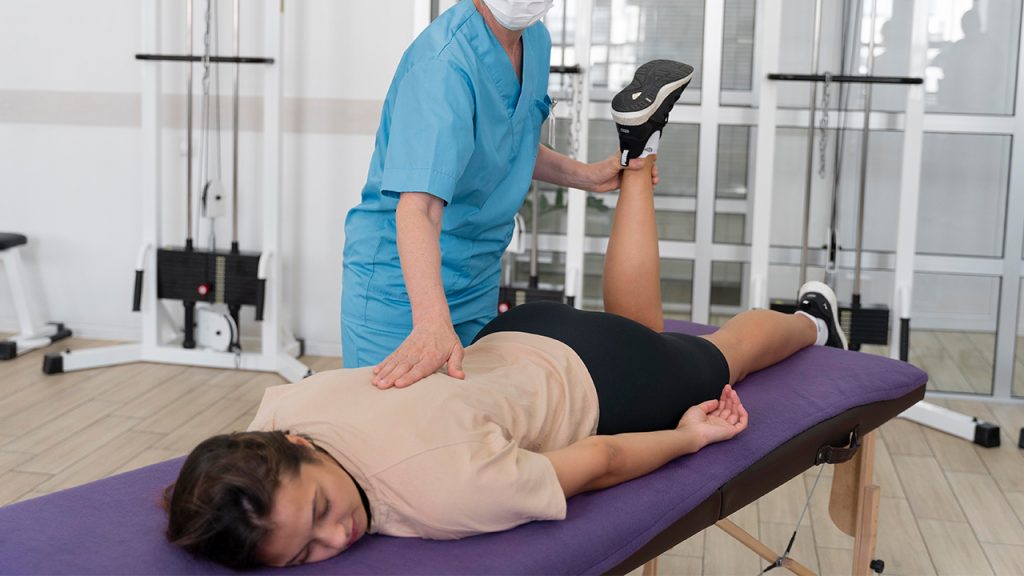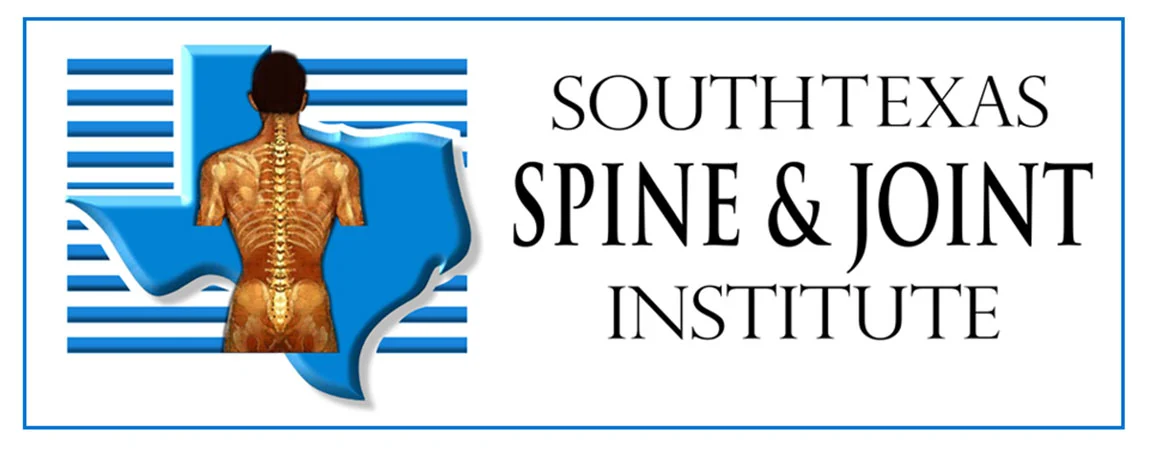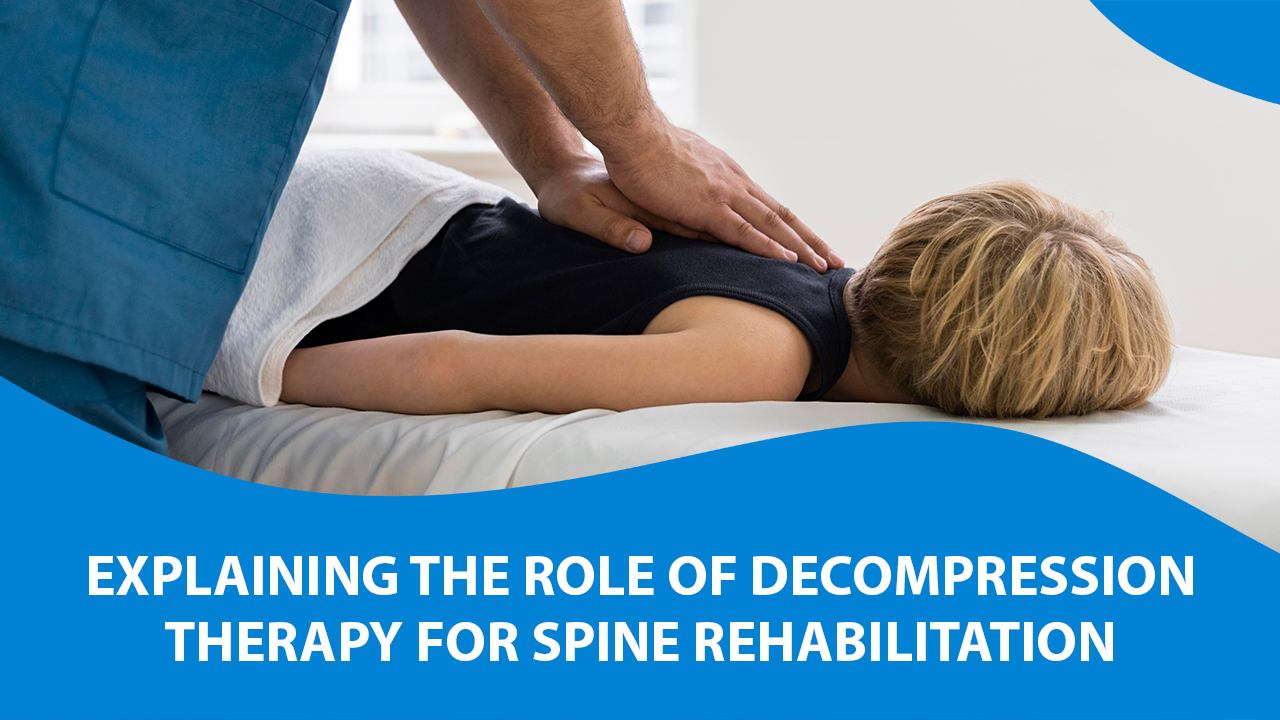Introduction
Spinal decompression exercises refer to a series of movements and stretches aimed at relieving pressure on the spine, a crucial aspect of maintaining spinal health. These exercises serve the purpose of alleviating discomfort and enhancing flexibility by gently stretching the spine and surrounding muscles. Back decompression treatment, often recommended by healthcare professionals, employs various techniques such as stretching, strengthening, and low-impact activities to achieve spinal decompression. The significance of these exercises lies in their ability to provide decompression therapy for spine, helping individuals mitigate the effects of spinal compression caused by factors like poor posture, sedentary lifestyles, or injury. Incorporating decompression therapy for spine exercises into one’s routine is not just about relieving immediate discomfort but also about fostering long-term spinal health. These exercises are tailored to address the intricate nuances of spinal health, empowering individuals to take swift and robust action to enhance their well-being. By delving into the realm of spinal decompression exercises, individuals can unlock the potential to elevate their physical health and discover the benefits of a meticulously crafted exercise regimen tailored to their needs.

Understanding Decompression Therapy For Spine
Understanding spinal compression is vital for anyone seeking effective decompression therapy for spine. Spinal compression occurs when the vertebrae in the spine exert pressure on the spinal cord or nerve roots, often leading to discomfort and pain. This compression can stem from various causes, including poor posture, spinal misalignment, degenerative disc disease, or herniated discs. The consequences of spinal compression can be debilitating, ranging from localised pain to radiating numbness and weakness in the extremities. Addressing spinal compression through back decompression treatment is essential to alleviate symptoms and prevent further deterioration of spinal health. By comprehending the intricacies of decompression therapy for spine and its repercussions, individuals can tailor their approach to decompression therapy, incorporating techniques such as inversion therapy, traction therapy, or massage therapy to enhance spinal health and empower themselves on their journey toward pain relief and improved mobility in their digital landscape of everyday life.
Types Of Spinal Decompression Exercises
Stretching Exercises:
Stretching exercises are a fundamental component of decompression therapy for spine. By gently elongating the muscles surrounding the spine, these exercises help alleviate pressure and promote flexibility.
Hamstring Stretches:
Targeting the muscles at the back of the thigh, hamstring stretches reduce tension that can contribute to spinal compression. This exercise is particularly beneficial for individuals experiencing tightness in the lower back.
Quadriceps Stretches:
Focusing on the front thigh muscles, quadriceps stretches aid in relieving pressure on the spine by addressing tightness in the muscles that support proper posture.
Hip Flexor Stretches:
These stretches target the hip flexor muscles, which can become tight due to prolonged sitting or physical inactivity. By releasing tension in the hip flexors, this exercise contributes to spinal decompression therapy.

Strengthening Exercises:
Strengthening exercises play a crucial role in supporting the spine and maintaining proper alignment. These exercises help fortify the muscles surrounding the spine, providing stability and reducing the risk of compression-related issues.
Core Strengthening Exercises:
Engaging the muscles of the abdomen and lower back, core strengthening exercises such as planks and abdominal crunches promote spinal stability and alleviate pressure on the vertebral discs.
Back Extensor Exercises:
Targeting the muscles along the spine, back extensor exercises improve posture and relieve tension, aiding in spinal decompression and reducing the risk of compression-related discomfort.
Pelvic Tilts:
Pelvic tilts engage the muscles of the pelvis and lower back, promoting better spinal alignment and reducing strain on the vertebral column. This exercise is particularly beneficial for individuals experiencing lower back pain.

Low-Impact Exercises:
Low-impact exercises offer a gentle yet effective way to decompress the spine without putting undue stress on the joints. These exercises promote circulation, flexibility, and spinal health while minimizing the risk of exacerbating compression-related issues.
Swimming:
Swimming provides a full-body workout while minimizing impact on the spine, making it an excellent choice for individuals seeking treatment for back decompression. The buoyancy of water supports the body, allowing for fluid movement without straining the vertebral column.
Walking:
Another low-impact exercise, walking, promotes circulation and flexibility while gently engaging the muscles of the lower body. Regular walking can help alleviate pressure on the spine and improve overall spinal health.
Cycling:
Whether outdoors or on a stationary bike, cycling engages the muscles of the lower body without jarring the spine. This low-impact exercise promotes cardiovascular health and strengthens the muscles that support proper spinal alignment.
Techniques For Spinal Decompression
Inversion Therapy
Inversion therapy involves hanging upside down to alleviate spinal pressure, a key aspect of decompression therapy for spine. Safety precautions are crucial, especially for individuals with specific medical conditions.
Traction Therapy
Traction therapy stretches and lengthens the spine using devices like mechanical traction machines or traction tables. These devices can be adjusted to target specific areas of the spine.
Massage Therapy
Massage therapy reduces muscle tension and promotes relaxation, aiding in decompression therapy for spine. Techniques like Swedish massage and trigger point therapy can effectively relieve back pain and improve spinal health.

Precautions And Considerations
When engaging in spinal decompression exercises, it is crucial to take certain precautions and considerations into account to ensure safety and effectiveness.
- Firstly, consulting with a healthcare professional before beginning any decompression therapy for spine is highly recommended, especially if you have pre-existing conditions or are unsure about the suitability of certain exercises. This consultation can provide personalized guidance tailored to your specific needs and help prevent potential injuries.
- Secondly, listening to your body’s limits is essential during the process of back decompression. Paying attention to any discomfort or pain and adjusting your exercises accordingly can prevent overexertion and further damage to the spine.
- Lastly, avoiding overexertion is paramount to prevent strain or injury while engaging in spinal decompression exercises. Moderation and gradual progression are key to a safe and effective decompression routine.
By adhering to these precautions and considerations, individuals can enhance their spinal health and empower themselves to navigate their fitness journey with confidence in their own abilities and well-being.
Lifestyle Changes For Spinal Health
Ergonomic Improvements In workspace And Home Environment
Ergonomic improvements in the workspace and home environment play a crucial role in supporting spinal health. By making simple adjustments to your desk setup, such as ensuring your chair provides adequate lumbar support and positioning your computer monitor at eye level to prevent neck strain, you can reduce the risk of decompression therapy for spine. Additionally, investing in an ergonomic keyboard and mouse can promote proper wrist alignment, further alleviating pressure on the spine. Implementing these ergonomic enhancements can complement spinal decompression therapy and decompression therapy for the back, facilitating a more comfortable and supportive environment for your spine.
Weight Management
Weight management is another essential aspect of maintaining spinal health. Excess weight can exert additional pressure on the spine, contributing to spinal compression and discomfort. By adopting a balanced diet and incorporating regular exercise into your routine, you can manage your weight effectively and alleviate strain on your spine. Engaging in low-impact exercises such as swimming, walking, or cycling not only promotes weight loss but also supports spinal decompression therapy by strengthening the muscles surrounding the spine. By prioritizing weight management, you can enhance the effectiveness of back decompression therapy and reduce the burden on your spine.
Regular Exercise Routine
Establishing a regular exercise routine is fundamental to promoting spinal health and supporting the benefits of spinal decompression therapy. Incorporating exercises that target core strength and flexibility can help stabilize the spine and improve overall posture, reducing the risk of spinal compression. Additionally, engaging in activities that promote spinal mobility, such as yoga or Pilates, can enhance spinal decompression treatment by relieving tension and promoting proper alignment. By committing to a consistent exercise regimen, you can empower yourself to take proactive measures to support your spine’s health and well-being in the digital landscape of modern living.

Conclusion
In conclusion, the significance of spinal decompression exercises cannot be overstated. Incorporating these exercises into your daily routine can greatly benefit your spine’s health and overall well-being. By engaging in decompression therapy for spine, individuals can alleviate pressure and tension, promote proper alignment, and reducing the risk of injury or discomfort. Consistent back decompression treatment through stretching, strengthening, and low-impact exercises can lead to significant improvements in mobility and flexibility. It’s essential to remember that maintaining spinal health is an ongoing process, requiring dedication and mindfulness. Therefore, I encourage everyone to make these exercises a regular part of their lifestyle to unlock the full potential of a healthy spine. Lastly, remember to consult with healthcare professionals, listen to your body’s cues, and make necessary adjustments to ensure a swift and robust journey towards spinal wellness.
Experience relief and rejuvenation with back decompression treatment at South Texas Spine & Joint Institute. Take the first step towards a pain-free life today! Contact us for an appointment


No comment yet, add your voice below!